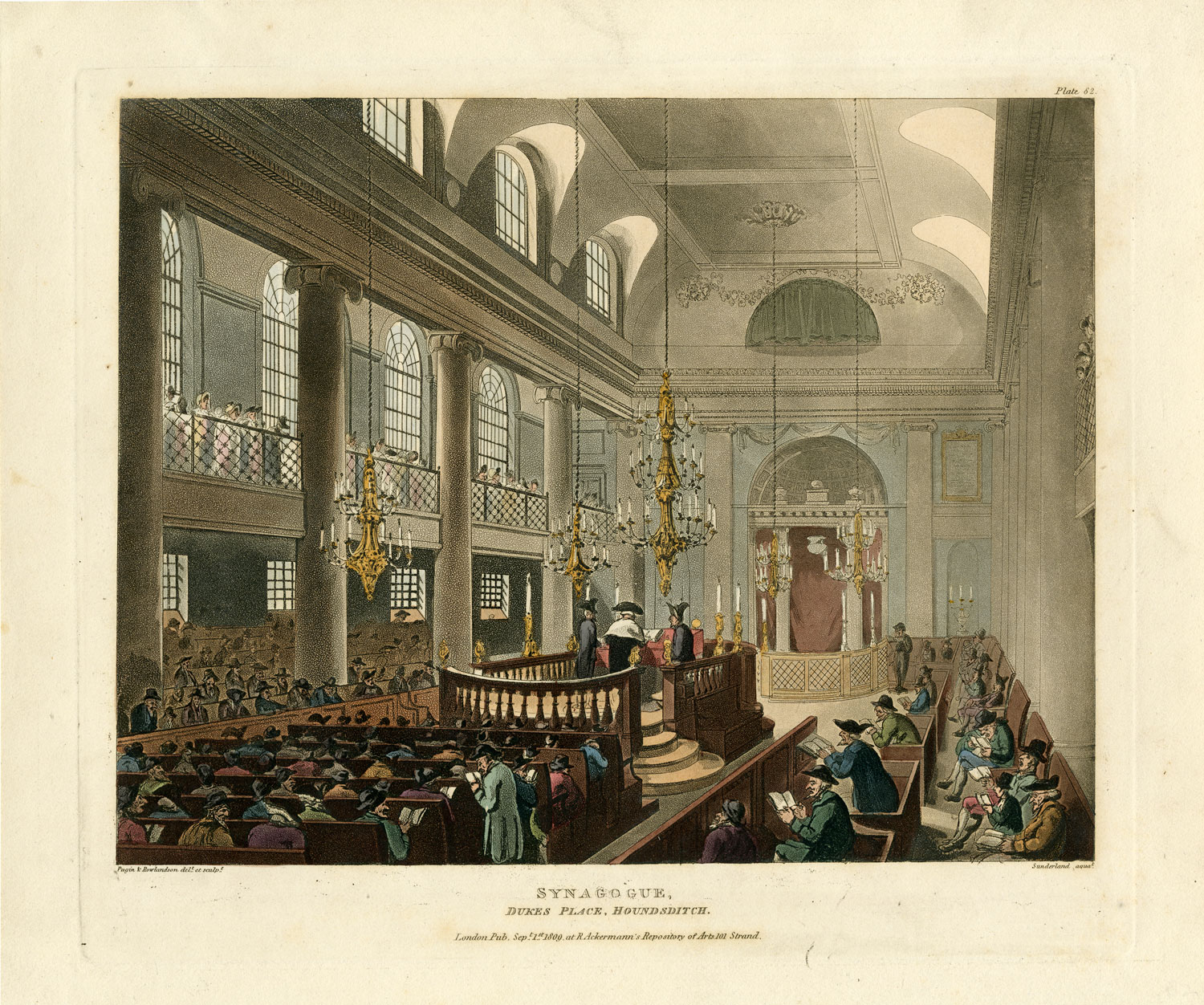Classical-style synagogues had been popular in Europe since the late 17th century, when the Ashkenazi Great Synagogue and Portuguese Synagogue of Amsterdam were erected. Like these buildings, London’s Great Synagogue at Duke’s Place (1788–1790), designed by James Spiller, featured a subdued exterior but architecturally rich sanctuary that combined the monumentality of Amsterdam’s Portuguese Synagogue with the delicacy of the Robert Adam style prevalent in Georgian England.
The first Ashkenazi synagogue constructed in London after the return of Jews to England in the 17th century was built at Duke’s Place in the 1690s, followed by a new building in 1722. As their numbers and resources grew, the congregation built a third version on the site between 1788 and 1790, sponsored in large part by the wealthy Judith Hart Levy. As seen in this print, the structure was designed in an elegant, yet restrained, Classical style with tall Ionic columns supporting the women’s galleries and, on the ground floor, a large curved bimah set close to the ark. Rows of seats under the galleries face the center as in the Sephardi arrangement, but there are also rows of benches in the center space facing front toward the bimah, and beyond that to the ark. A curved, low dividing partition in front of the ark forms a large semicircular niche defined by two columns, and this curve echoes the bimah design. Note the impressive chandeliers lighting the space and the placement of candles on the edges of the ark parapet and around the bimah; light was an important element in the synagogue for symbolic and practical reasons.
This aquatint is based on one by Augustus Charles Pugin (1762–1832) and Thomas Rowlandson (1756–1827), originally published in the popular magazine Ackermann’s Repository of Arts. Pugin’s depiction of the architecture appears to be quite reliable. Rowlandson, on the other hand, has filled the synagogue with praying Jews, many of who conform to popular caricatures of the time. The building was repaired and redecorated several times over the years before it was destroyed in the German bombing of London during the Blitz in 1941.
